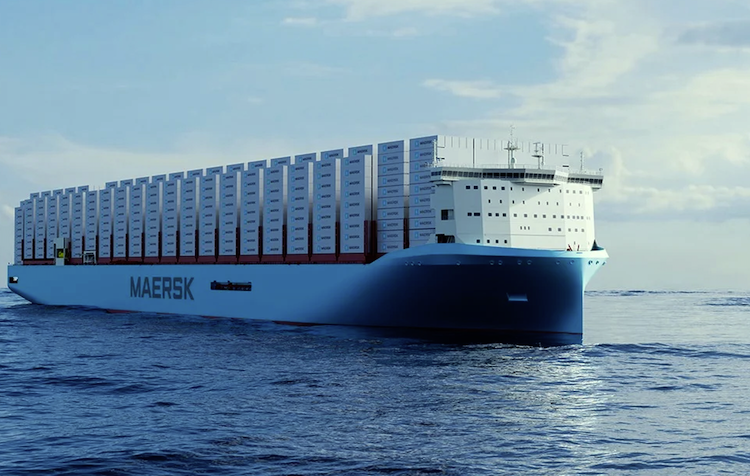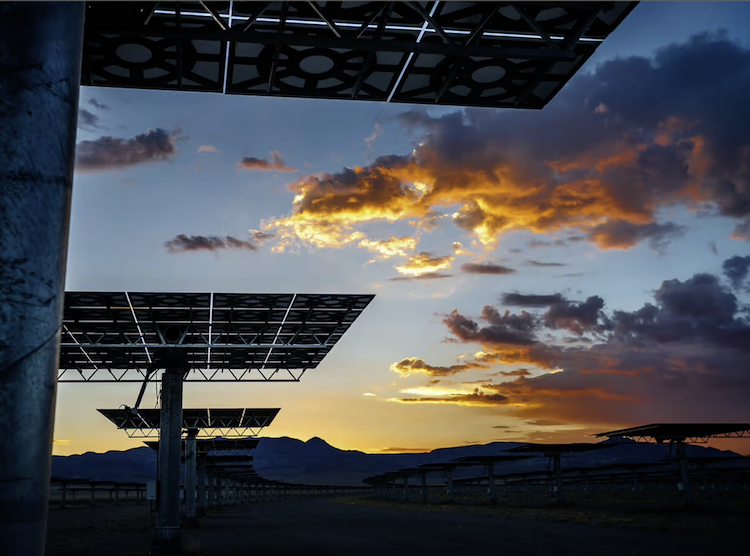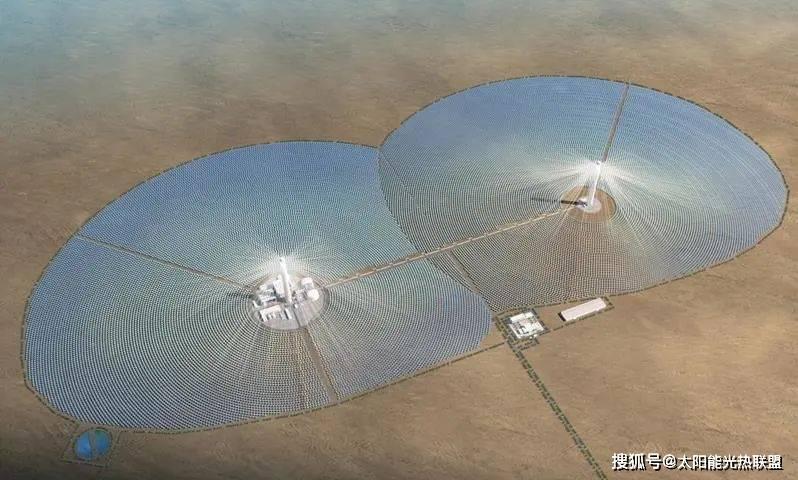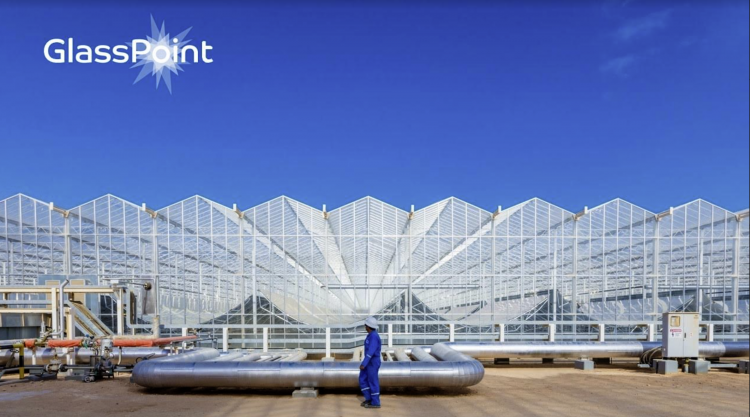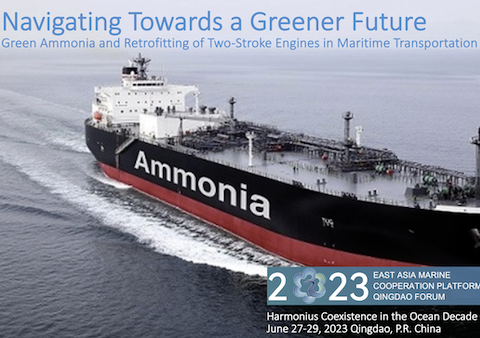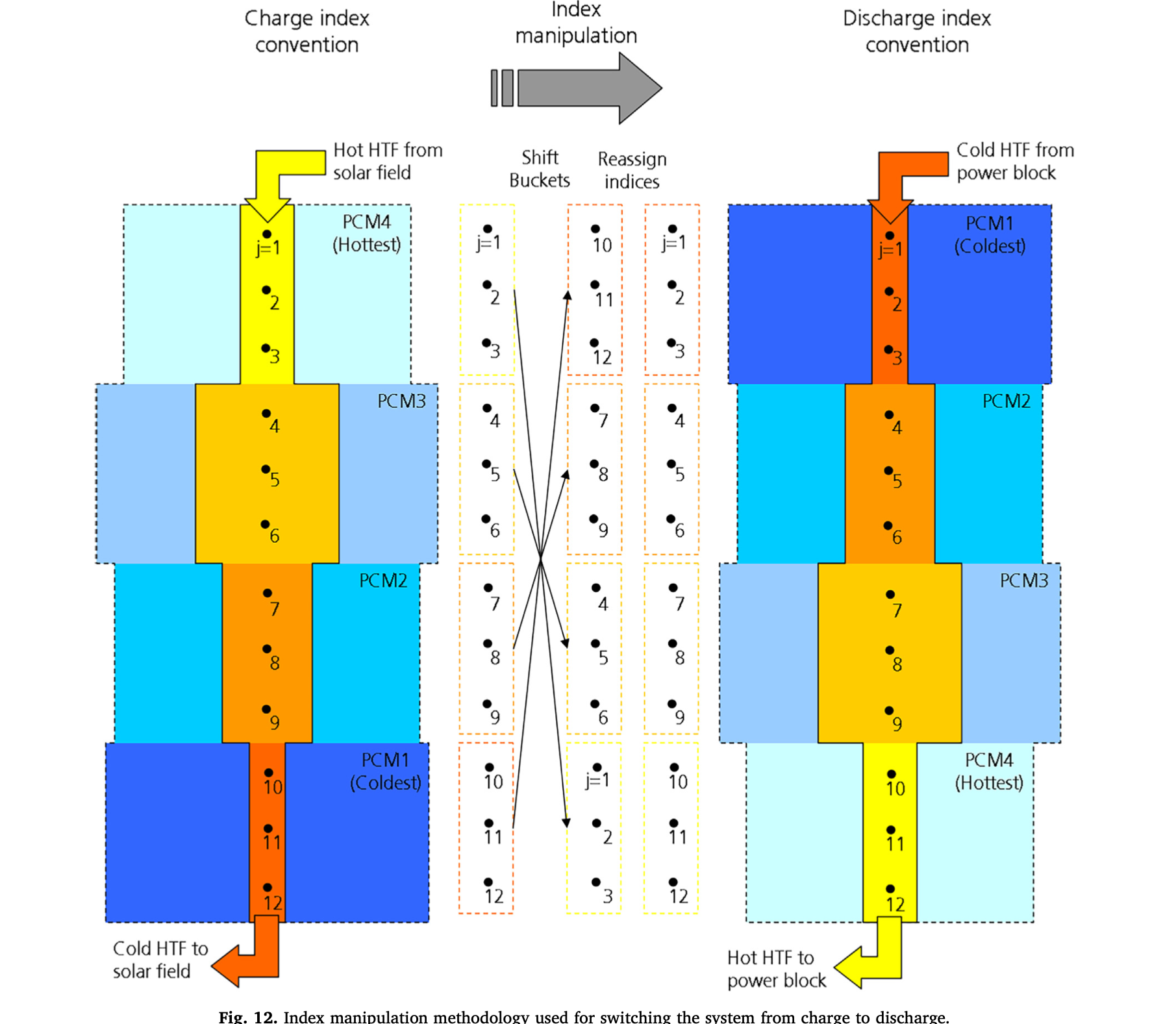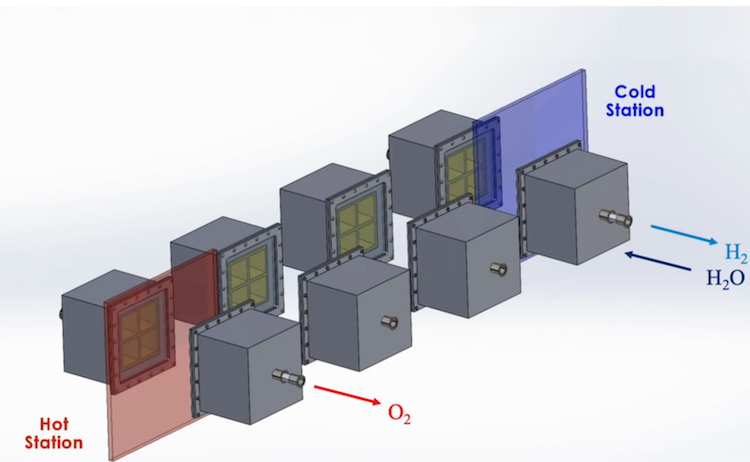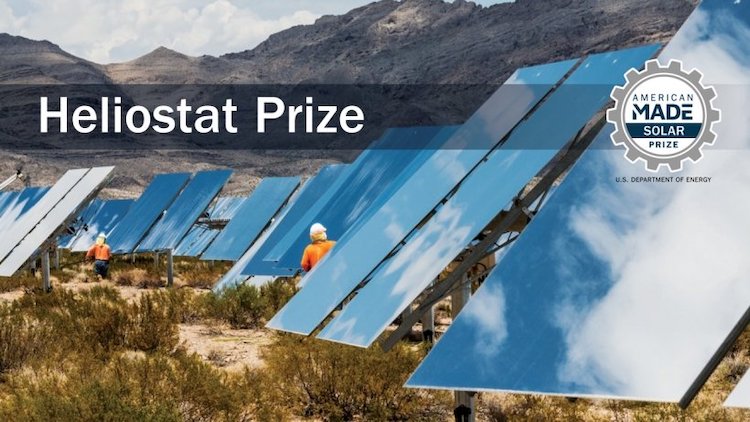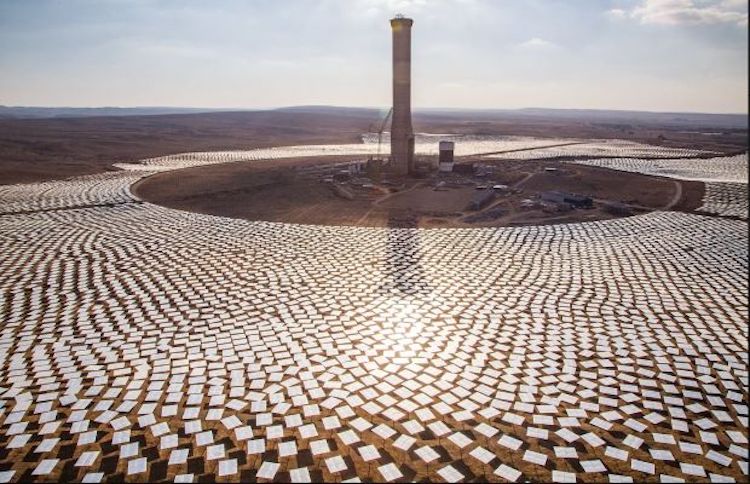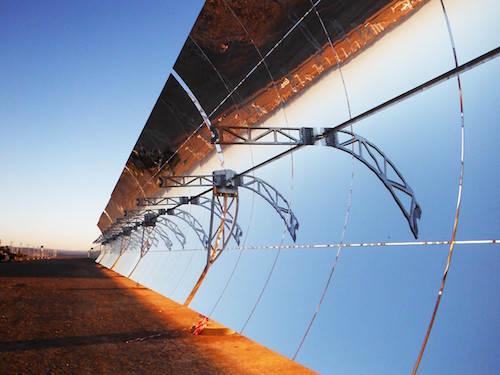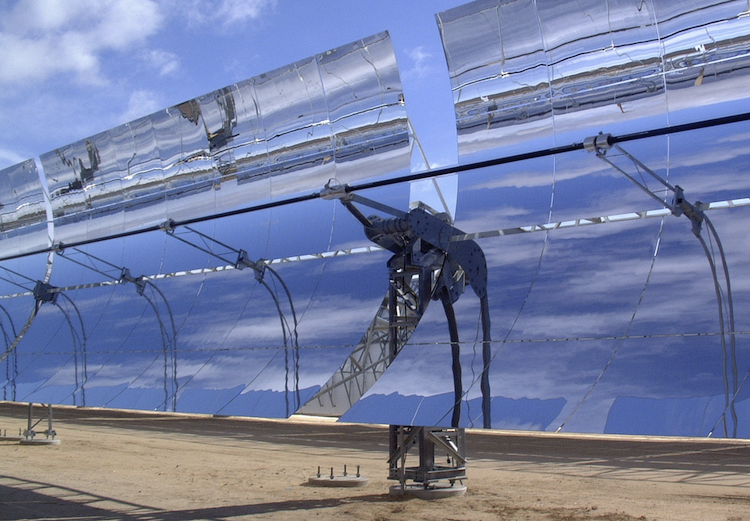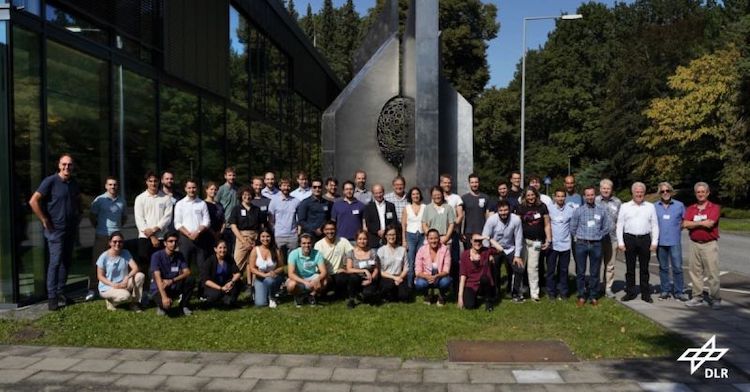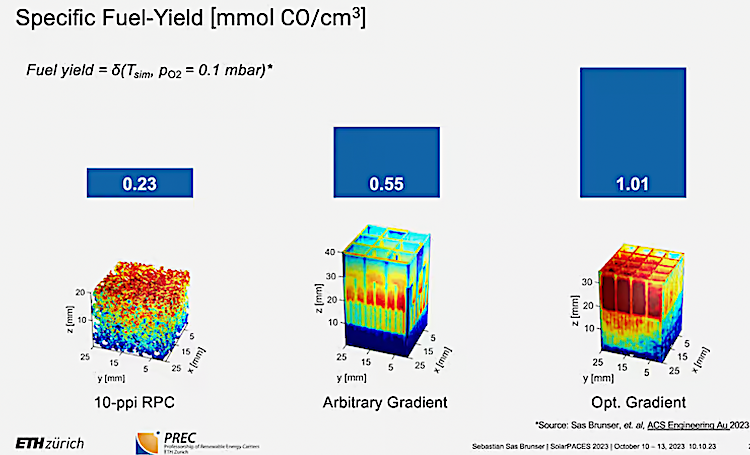
3D-printed ceria was one of the many brilliant ideas presented by international solar researchers at this year’s SolarPACES Conference in Sydney. IMAGE@Sebastian Sas Brunser
In solar reactors for making solar fuels at high temperatures, ceria’s behavior when heated makes it state-of-the-art for unlocking the thermochemistry involved. (How solar fuels are made). But its structure lacks “intelligent design.” So a precisely controlled design that heats more evenly could revolutionize efficiency; cutting cost and speeding commercialization of solar fuels like jet fuel for aviation. We interviewed Sebastian Sas Brunser, the co-author with solar fuels pioneer Aldo Steinfeld at ETH-Zurich about their paper Design and Optimization of Hierarchically Ordered Porous Structures for Solar Thermochemical Fuel Production Using a Voxel-Based Monte Carlo Ray-Tracing Algorithm, published in ACS Engineering Au.
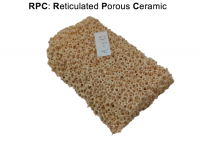
SK: Was this a novel idea; to 3D-print the ceria?
SSB: No, there’s been progressive research on alternative ceria topologies for years. At Professor Steinfeld’s laboratory at ETH-Zurich, there was already a project on new ceria structures created via the replication method. But back then, only the templates were 3D printed, so we were not printing with ceria directly.
SK: What was the problem with that earlier method?
SSB: The replication methodology was quite limiting. To manufacture these forms, you start with a plastic template, coat it with a ceramic slurry of ceria, and then sinter it. The sintering process burns the plastic templates and sinters the ceramic particles in the slurry. The result is a solid ceramic with the template’s shape; if you use a foam as template, that’s called a reticulated porous ceramic (RPC). The RPC foams used in the state-of-the-art solar reactors are manufactured this way. This form of structure, although good in general, and the best found so far, doesn’t exploit the full potential of volumetric absorption of the incoming radiation.
SK: So the heat doesn’t spread evenly
SSB: Right. The first few millimeters of the structure get really hot, and then the temperature decays quite quickly. And that extinction of irradiation along this structure is exponential. So the front is quite hot and can overheat, but the back is cold. Also, that manufacturing technique was quite limiting; there’s not a lot of flexibility on what you can do. For example, people thought maybe foams with bigger pores would be better. But its not possible to get the same templates with much bigger pores. Also, the method is restricted to struts; if your template has a wall, or surface, and you coat this wall and then sinter it, the plastic burns away and you will have a big hole inside. That structure will collapse. In addition, the even distribution of the slurry in the template is also a problem. If you have very big structures and need to coat the center, it’s almost impossible to get in there. So, you’re very restricted in what you can produce with this coating technique. Finally, reproducibility with that technique is quite low. Every time someone else manufactures it, it will be different.
SK: And your solution?
SSB: We created an ink with which we can directly print, so we don’t need a template. We just create the shape by depositing the ink in a certain order. This ink was mostly developed by our colleagues in the Complex Material Lab also at ETH Zurich. They were 3D-printing other ceramics, so this technique was not new to them; they were already using that. So Professor Steinfeld and Professor Studart came together and said let’s develop ceria ink for 3D printing because we can directly apply this for solar reactors making solar fuels. So, with the direct ink writing (DIW) process, now we have flexibility on the shape. We can create shapes that allow us to improve the radiation heat transfer within them. Any time you have uniform porosity, you will deal with this exponential attenuation of incoming radiation and have this very strong temperature gradient. But if you can print structures with your own design, you can attenuate it more uniformly by changing the porosity through the depth of the structure. And given the manufacturing process, the final shape is consistent , and we can print 100 times the same structure, and it will always be the same.
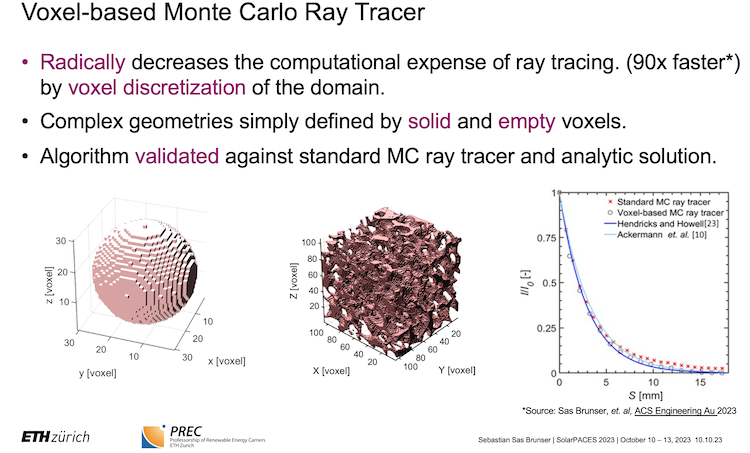
Voxel-based Monte Carlo Ray Tracer uses voxels to calculate in 3D, not pixels. IMAGE@Sebastian Sas Brunser Design and Optimization of Hierarchically Ordered Porous Structures for Solar Thermochemical Fuel Production Using a Voxel-Based Monte Carlo Ray-Tracing Algorithm
SK: Can software calculate the optimal shape?
SSB: Yes. Once you can simulate the temperature, you can start calculating, with a few assumptions, how much solar fuel will this shape produce. Then, you can start coupling this simulation with optimization methods. Telling the optimization, you need to produce a shape, given certain parameters, like a maximum layers, height, wall thickness, porosity of each layer, and make a shape that maximizes fuel output. And we are already using this methodology to optimize fuel yield.
SK: How do you check which ones work better and which are worse?
SSB: You can simulate the relative heat profile in these structures with Monte Carlo ray tracing. That’s relatively easy to set up. It’s one of the favorite computational tools because it can simulate the directional distribution of radiation with high accuracy. But its problem is that once shapes get complex, the calculating times explode. So, if you want to simulate a cube, it’s almost instantaneous, but if you have shapes that you defined with more and more surfaces, then the number of couples between rays and surfaces combinatorally explodes, and it takes forever. So now, instead of assuming everything is continuous, like in the real world, we discretized everything in voxels and used a voxel-based Monte Carlo ray tracer. A voxel is like a pixel but in 3D. By doing this, everything is made only of cubes, like in the game Minecraft. Now, for porous structures, we can calculate intersections 90 times faster with this methodology.
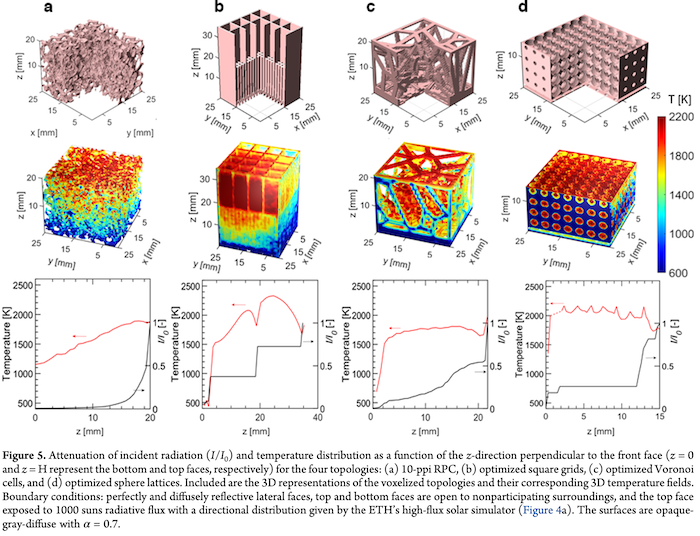
IMAGE@Sebastian Sas Brunser Design and Optimization of Hierarchically Ordered Porous Structures for Solar Thermochemical Fuel Production Using a Voxel-Based Monte Carlo Ray-Tracing Algorithm
SK: Wow, sped up! But I thought ceria was solid. How can it run through a 3D printer?
SSB: Correct, but it needs to be both liquid and solid. The liquid will flow well through its container, the hose, the 3D printer, and finally, the nozzle. But if you start depositing liquid when you go layer after layer, the shape won’t be retained.
SK: How do you make it switch to solid?
SSB: You start with a solution for ink formulation, mainly water and a polymer that creates this consistency that can change between liquid and solid. So the rheological properties (how well it flows) mostly come from the water plus this polymer mixture, and we add fine ceria particles to this mixture. When pressure is applied, this ink flows. Once it’s printed, and in rest, it’s a very soft solid. You need a lot of these ceria particles in the ink, so they will be close to each other enough, so that in the furnace, once everything else is burned or evaporated away, the ceria particles sinter together with the heat, creating solid structures.
SK: So it’s fired hotter than to make solar fuels?
SSB: Yeah, after we print a structure, we put it into a furnace, very slowly heated up to 1600°C overnight. The cooling down is also very slow, not to produce thermal shocks. This burns the other ingredients away. There’s just ceria left.
SK: What temperatures do solar fuels need?
SSB: 1800 °C is the highest you can get without damaging the structure or sublimating the material. You want to reach as high temperatures as possible because this will give you the most fuel yield: the hotter you get, the more fuel you get.

The journal cover highlights the algorithm of the Voxel-Based Monte Carlo Ray-Tracer; it discretizes the continuous world into voxels, where each ray “traverses” through these voxels until it reaches a solid where it is absorbed. In the cover, the rays are traced from the sun, reflected in a paraboloid surface, and concentrated towards a porous ceria structure.
SK: I know it’s early, but have you checked durability?
SSB: Yes. This was a very important question for us. We subjected these structures to a stress test, heating and cooling them in around ten to 15 cycles per day, around 35 minutes per cycle, to see how they behave long-term. Test cycles are more stressful than normal ones because the temperature cycling between 1500 °C and cooling to 800 °C is much faster than in normal operation. We discovered they broke relatively fast, lasting 30 to 40 cycles, before breaking down. Chemically, ceria is known to be very stable. So the problem was not that the chemistry was degrading. In a CT scan – to try to see the very fine structure with magnification – we saw that the printed samples came with a few cracks that expanded during heating and cooling. Eventually, we used a procedure for infiltrating the cracks with more ceria slurry, in a vacuum. Around 80% of the cracks were refilled with this process. When we re-sintered them, these cracks were healed. Then they’d hold 100 cycles, the equivalent of several weeks continuous, even in these harsher conditions than state-of-the-art.
SK: How does that compare to ceria now?
SSB: Our results suggest that 3D-printed ceria bricks should last longer than today’s RPCs, which last 200-300 cycles under normal operating conditions. But even if one brick did break, the big advantage of the 3D-printing is that it any brick is easily exchanged to continue running, as a cavity can be made modular. Besides, the old bricks can be completely recycled, as they are made of pure ceria and the material is not consumed or degraded.
References (open access): Sas Brunser S., Steinfeld A., “Design and optimization of hierarchically ordered porous structures for solar thermochemical fuels production using a voxel-based Monte Carlo ray-tracing algorithm”, ACS Engineering Au, Vol. 3, pp. 326-334, 2023. https://doi.org/10.1021/acsengineeringau.3c00013 Sas Brunser S., Bargardi F., Libanori R., Kaufmann N., Braun H., Steinfeld A., Studart A., “Solar-driven redox splitting of CO2 using 3D-printed hierarchically channeled ceria structures”, Advanced Materials Interfaces, Vol. 10, 2300452 (1 to11), 2023. https://doi.org/10.1002/admi.202300452













